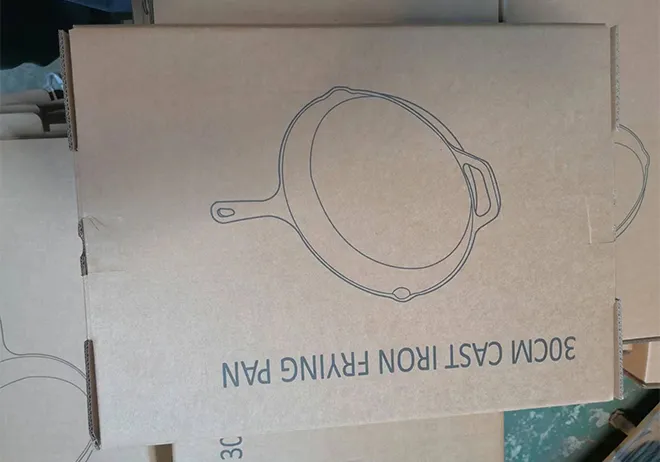- When it comes to maintenance, caring for a flat cast iron skillet is simple. To clean it, simply scrub with hot water and a stiff brush, avoiding soap which can strip away the seasoning. After washing, dry the skillet thoroughly and apply a thin layer of oil to keep it seasoned and rust-free. With regular maintenance, your cast iron skillet will only improve with age, developing a natural patina that enhances its non-stick properties.
- A black iron griddle is revered for its excellent heat retention properties, allowing it to reach and maintain high temperatures with ease. This characteristic makes it an ideal choice for searing steaks to perfection, achieving that desirable Maillard reaction on the surface while keeping the inside juicy and tender. But its prowess extends beyond just meat; this griddle excels at preparing a wide array of dishes, from caramelized vegetables to fluffy pancakes.
Because the lower sloping edges allow for easy access and sliding of utensils, it’s ideal for frittatas and egg dishes.
Dutch ovens come in various types, including traditional cast iron, enameled cast iron, and aluminum. Traditional cast iron Dutch ovens are seasoned and require regular maintenance to prevent rust and maintain their non-stick properties. Enameled cast iron Dutch ovens have a porcelain enamel coating, offering easy maintenance and a variety of color options. Aluminum Dutch ovens are lightweight and excellent conductors of heat, making them suitable for outdoor cooking.
Enamel pots are a popular choice for slow cooking and stewing. Enamel coating not only adds a pop of color to the kitchen but also makes the pot easy to clean and maintain.
Aside from being available in a range of different colors, the main advantage of enameled cast iron over unfinished cast iron is that it’s much less likely to rust, and is also relatively easy to clean and maintain. And while these pans are more of an investment than mass-market unfinished cast iron cookware, they offer invaluable convenience and elegance that’ll last for several lifetimes.
Ready to Cook?
 The sloped shape and light weight of skillets make them perfect for quick cooking and stir-fries.
The sloped shape and light weight of skillets make them perfect for quick cooking and stir-fries.
Carbon steel cookware boasts the naturally non stick properties and great heat retention of cast iron, combined with the cooking speed and heat control of stainless steel. We’d recommend reaching for carbon steel when cooking steaks, cornbread, or anything else cooked over high heat—though it’s versatile enough to use for low-heat cooking as well.
Bread Baking: Dutch ovens are favored for baking artisanal bread due to their ability to create a steamy environment that results in a crispy crust and a soft interior.
 It is a vessel that has seen countless family recipes come to life, from grandmother's signature beef bourguignon to mother's comforting chicken noodle soup It is a vessel that has seen countless family recipes come to life, from grandmother's signature beef bourguignon to mother's comforting chicken noodle soup
It is a vessel that has seen countless family recipes come to life, from grandmother's signature beef bourguignon to mother's comforting chicken noodle soup It is a vessel that has seen countless family recipes come to life, from grandmother's signature beef bourguignon to mother's comforting chicken noodle soup red enamel pot. Each scratch, chip, or stain tells a story, a testament to the many meals and moments it has witnessed. Its presence in the kitchen is not just about cooking; it's about nurturing connections, fostering traditions, and preserving family heritage.
red enamel pot. Each scratch, chip, or stain tells a story, a testament to the many meals and moments it has witnessed. Its presence in the kitchen is not just about cooking; it's about nurturing connections, fostering traditions, and preserving family heritage.

